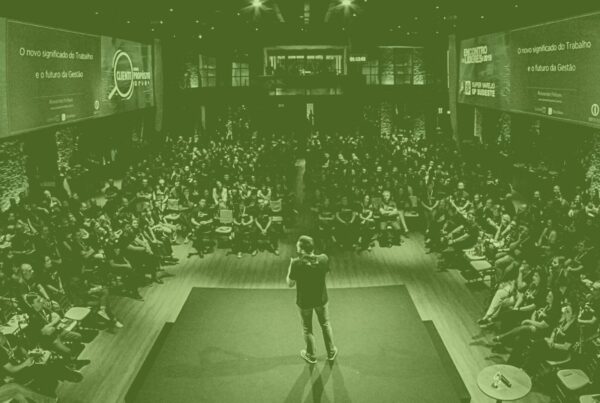Networking events are always a useful way to get people to come together and form professional and personal bonds. But as with any other event, though, there is a way you should approach the function. Otherwise, it’s just a social event with no direction. That means it ends up being a money waster with no long-term benefits for your company or the attendees. We’ll explain all there is to know about these come-togethers and how to follow up after a networking event for the best measurable results.
These events have their pros and cons depending on your approach and your outlook. If utilized strategically, it could be a goldmine for prospective leads and increased brand loyalty. If not, it can be a complete waste of time and money, not to mention a scolding from your higher-ups.
Pros Of Networking Events
Strengthen Relationships Through Face-to-Face Meetings
Even in the age of social media and Skype, 84% of people still prefer in-person interactions. Networking statistics also suggest in-person meetings generate more ideas compared to remote conferences. You can always follow up after a networking event using social media. However, in-person meetups help kickstart the initial interactions.
Get People Out of Their Comfort Zones
Many event planners have reported receiving positive reviews from attendees after a networking event. Occasionally, the guests say the event helped them get out of their shell. This is often the case for introverted people who feel more secure with interactions behind a computer or mobile phone screen. The event helps them develop confidence, which they have your company to thank for. It’s always good to help people in this manner, even if it doesn’t translate to a conversion. Consider organizing networking games to get everybody involved – even those who appear to be shy.
Gain Social Media Attention
The point of an event is to break away from social media just for a day. By doing so, you will actually boost your social media presence before, during, and after the event. You can do this by having a social media hashtag and using it for all event-related posts. Encourage attendees to do the same. You can encourage further event-related posts from guests during the event by incorporating a social media wall displaying posts updated in real-time.
Cons Of Networking Events
Not-So-Instant Results
The new relationships acquired aren’t always instant and take time to cultivate. Many interactions may result in new Facebook and LinkedIn friends but never go beyond that. If you don’t properly follow up after a networking event, then the event will fall short in achieving its intended purpose of acquiring new leads. Remember, follow-up activities after the event are extremely important for taking leads further down the sales funnel process.
Expenses
In-person events aren’t cheap. You have to rent a venue, pay staff, order catering, and handle loads of PR material. All of that costs more than a pretty dime. If the event flops, then you just took a huge chunk out of the company budget without anything to show for it. If it were sponsors that funded your event, then that’s potentially even worse because they wasted a lot of their own money for a venture that flopped. This badly erodes trust; do you think the same sponsors will trust you again for a future event?
Low Attendance or Conversion Rate
Even with the appropriate marketing measures, there is never a guarantee that guests will flock to your event in droves. Think of big-budget movies that flop at the box office. Filmmakers certainly don’t anticipate low turnout if they allot a monstrous budget towards a movie and its marketing. Yet, some movies still perform surprisingly poorly. The same can happen with an event. Your followers may express interest early on, yet just fail to show up on event day for whatever reason. Fortunately, you can minimize the chances of an event flop by following some pre-event measures.
How To Draw Value From Networking Events
How do you leverage networking events to your full advantage? As the event host, you need to be in the center of the mingling and interactions. However, time is limited; you simply can’t form a meaningful conversation with everyone. Save the meaningful conversations for prospective attendees. These are the people you feel could become long-term loyal clients, affiliates, or brand advocates. Don’t be afraid to abruptly end conversations you feel won’t lead to a conversion.
Also, there may be a few faces you recognize from social media. Perhaps you recognize them due to their frequent activity on your company’s social network channels. Make these people your priority. Since there is already a social media rapport, use the event to build in-person connections to solidify the already-strong relationship.
Before The Event
The pre- and post-event follow-ups are just as important as the event itself. The pre-event activities are about building anticipation. For VIP members, consider an official welcome package that includes physical swag items, such as promotional T-shirts, tote bags, a mug, etc. For everyone else, keep them up to date with the following:
- Use Instagram to show event-related photos, such as the venue interior
- Officially announce the speaker or presenter
- Host at least one social media contest with free tickets as giveaways to the winners
- Release a behind-the-scenes video of the staff in the planning phase of the event
- Post GIFs or memes with funny captions that ties back to the event
- Incorporate FOMO (Fear of Missing Out) by regularly reminding them that seats are limited. Use a widget counter to show the number of remaining tickets, which ticks down every time a ticket is sold. Studies show the 18-33 age group have an especially strong fear of missing out. This makes FOMO a great strategy if your demographic consists mainly of younger millennials and older generation Zs.
This is also the time to set an event-specific goal. This needs to be clear and tie back to a bigger company goal. Perhaps you have a goal to achieve 20% more conversions than you did this time last year. The event can be a smaller part to help you achieve that end. The smaller event-specific goal in this instance can be to achieve 1,000 additional leads, with the aim to convert at least 10% of those leads to long-term customers. This would certainly be a strong leverage that gives you a good head start on reaching that bigger 20% goal.
During The Networking Event
Be active and acquire leads like the guests are doing among themselves. If you do a lecture or presentation, then freely wander the venue afterwards and offer your time to anyone who has questions or just want to converse one-on-one. The idea is to be an industry authority figure while at the same time being approachable and being “just one of the guys/gals.”
If the event includes workshops and tradeshow booths, then be sure vendors and facilitators are collecting guest information. The workshops can be free and open to anyone; just require them to submit their contact info. For booths, you can incorporate carnival-like games and hand out prizes in the form of promotional swag.
There should also be company representatives on the floor engaging in the same meaningful conversations. They should actively approach guests that are just kind of standing around and not really mingling or being an active participant. Representatives should steer the conversation to determine the attendee’s specific needs and wants and then redirect them to the appropriate workshop or tradeshow. Similarly, representatives can also redirect attendees to another guest they spoke with earlier if there are compatible interests.
Following Up After Networking Events
Follow up within 24 hours after the event with a thank you email for everyone that attended. Include a survey with questions to gauge attendees’ overall satisfaction. The answers provide valuable data regarding overall satisfaction and pinpoints areas you can improve on in future events.
For the guests that you really struck a rapport with during the event, reach out to them personally within the same timeframe. As a token of your appreciation, offer them a gift that can be the start of a long-term partnership or patronage. Some gifts as a show of goodwill include:
- Free one-month trial of your loyalty program
- Discount code good towards any purchase at your e-store
- Discount code the recipient can send to a friend or family of choice
- Invitation to a special members-only section on your company social media channel
- The key is to provide value. The form of the value isn’t so important as the fact that you give them something of monetary worth. A small freebie here and there goes a long way in cultivating trust.
Are networking events worth it for your business? Absolutely. But if and only if you are smart with your approach and have a game plan that covers the before, during, and after of the event. Treat the event as a leg-up or lead-in towards other company endeavors rather than as a separate venture.










